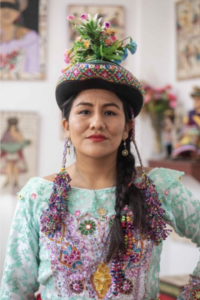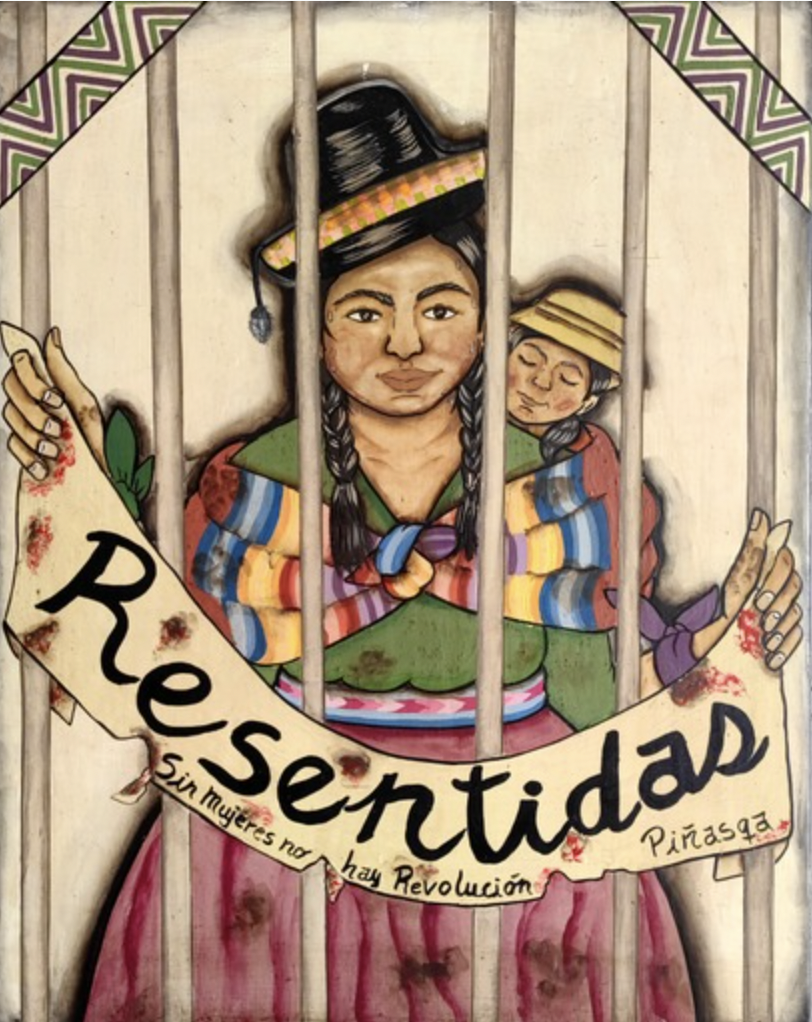The Andean community of Sarhua, located in southern Peru, is an indigenous community with long-standing traditions and practices. It is a cultural hotspot where artistry and tradition combine to celebrate the rich cultural history of Peru. One example of a traditional art form that exhibits this combination is the ‘Tablas de Sarhua’. Recognised as national cultural heritage by UNESCO, these art pieces vividly portray themes of family, tradition, and communal reciprocity. However, amidst the beauty of traditional art lies a significant problem: women’s lack of agency. This art-form, crafted solely by men, depicting men as the main character, and exchanged by men, systematically excludes Andean women in Peru from the artistic dialogue. Thus, recently, more and more influential female artists have emerged, seeking to correct this exclusion. In addition, as political turmoil and violence consumed Peru, Sarhuan artists further recognised the need for their work to transcend traditional boundaries. Embracing the power of art, they reimagined their works as tools for protest, amplifying marginalised voices, highlighting community concerns and advocating for peace.

Violeta Quispe de Sarhua, a trailblazer among Sarhua’s female artists, has harnessed the power of art to promote peace and social justice. Born to renowned Sarhuan artists Guadencia Yupari and Walberto Quispe, Violeta grew up immersed in the world of art and its transformative power. Inspired by the creative legacy of both her parents, particularly her mother, who stood as one of the pioneering female Sarhuan artists, Violeta started to produce her own art. She has created various paintings depicting the hidden experiences of Sarhuan women, which shed light on issues of discrimination and gender violence. Violeta’s art not only honours her Sarhuan heritage, but also acts as an agent for social change, infusing her artistic legacy with profound meaning and power.
Violeta’s Art Pieces

In this first painting, titled ‘Ekeka Kamachiq Apu,’ (‘Ekeka’ president) Violeta both challenges and honours traditional art. Ekekos are traditionally a male figure that represents abundance and prosperity in Andean culture. Here, an Ekeko takes on a new form as a female symbol of luck and prosperity. Created during the tumultuous year of 2022, amid Peru’s deadly political conflict, this piece embodies Violeta’s vision of a female president. Through this reinterpretation of traditional art, Violeta not only includes women in a place where they were not included before, but also creates a platform to address the prevailing political climate.
The painting is rich with symbolism, featuring emblems that resonate with peace, such as the white dove, symbolising harmony, and a book advocating for the right to quality education. Other symbols include representations of justice and ethics, reflecting the artist’s vision for an ideal presidency. Through this portrayal, Violeta offers a peaceful critique of the state while encouraging societal reflection on the values that should guide the nation. Furthermore, the artwork serves as a reminder of Peru’s remarkable attributes, including its amazing gastronomy, natural resources and cultural diversity. Amidst conflict, this painting fosters appreciation of women and Peru, promoting unity and resilience in the face of adversity.

This second painting depicts a woman and her daughter behind bars, clutching a banner with the word ‘Resentidas’ (resentful) prominently displayed, as well as the phrase ‘Sin mujeres no hay revolución’ (‘without women there is no revolution’) underneath. In translation, the term ‘resentidas’ loses some of its meaning. While it literally means ‘resentful’, its significance is heavily gendered. Normally, this term is used to dismiss and silence women who fight against oppression by portraying them as bitter. It is a way in which women’s voices are undermined, their credibility is diminished, and experiences are invalidated by dismissing their concerns as mere resentment. Violeta’s painting uses the image of women behind bars to represent societal constraints and the marginalisation of women’s voices. The proclamation ‘without women, there is no revolution’ is then used to advocate for more female agency and participation in social change.
Violeta portrays women and their voices as constrained by societal norms and expectations, pointing to the machismo culture prevalent in Peru, thus advocating for gender equality and encouraging women to reclaim their voices and assert their worth. Through her art, she makes space for women to express themselves authentically and demand their rightful place in society. Violeta uses traditional imagery and cultural symbolism to celebrate the richness of her Peruvian heritage while also addressing societal injustices as a means to encourage gender equality and peace.
These are just two of the many inspiring, thought provoking and beautiful paintings by Violeta Quispe de Sarhua. Her work goes beyond representation; it promotes dialogue, empathy, and resistance. Violeta’s art protrays a vision of future peacebuilding that is woven into the fabric of Peruvian traditions. Ultimately, she effectively amplifies women’s narratives and contributions to shaping Peru’s national identity, advocating for a more equitable and inclusive society.
What do you think?
- What are your own experiences with art’s potential to foster empathy, understanding and solidarity?
- Have you come across other examples of art you think of as contributing to social justice and peacebuilding?
- Why are women’s voices central to peacebuilding within communities?
- In what ways can individuals and communities support artists like Violeta in their efforts to create meaningful change through art?
- Reflecting on Violeta’s work, what is the balance between preserving cultural traditions and challenging these very traditions that also perpetuate harm?
If you enjoyed this item in our museum…
You might also enjoy Drawing a Peace Narrative (literally), Cyber peace and artivism, with Kathryn Brimblecombe-Fox, Add Women and Stir?’ For the Love of Feminism, Please Put the Spoon Down! and ‘Of Ordinary Things’: Iraqi Women, Art, War and Peace-building
Zoe Gudino, April 2024
Further Reading
- Check out Violeta’s social media to find out more about her work: Instagram and Facebook
- Read about some more of Violeta’s work during the COVID-19 pandemic: https://www.livinginperu.com/the-mother-daughter-duo-making-andean-inspired-face-masks/
- Here is some reading for those interested on the of the arts for peace: Creative Approaches to Transitional Justice: Contributions of Arts and Culture, Vogel, B., Kappler, S. and Richmond, O. (2024). The Art of Peace Formation: Arts-based Social Movements, Opportunities and Blockages. Edinburgh University Press.
- Here is some reading on women’s protest movements: Women in Peru protest against rising tide of murder and sexual crime, Women march as their rights are under attack around the world, A Look at Women’s Protests